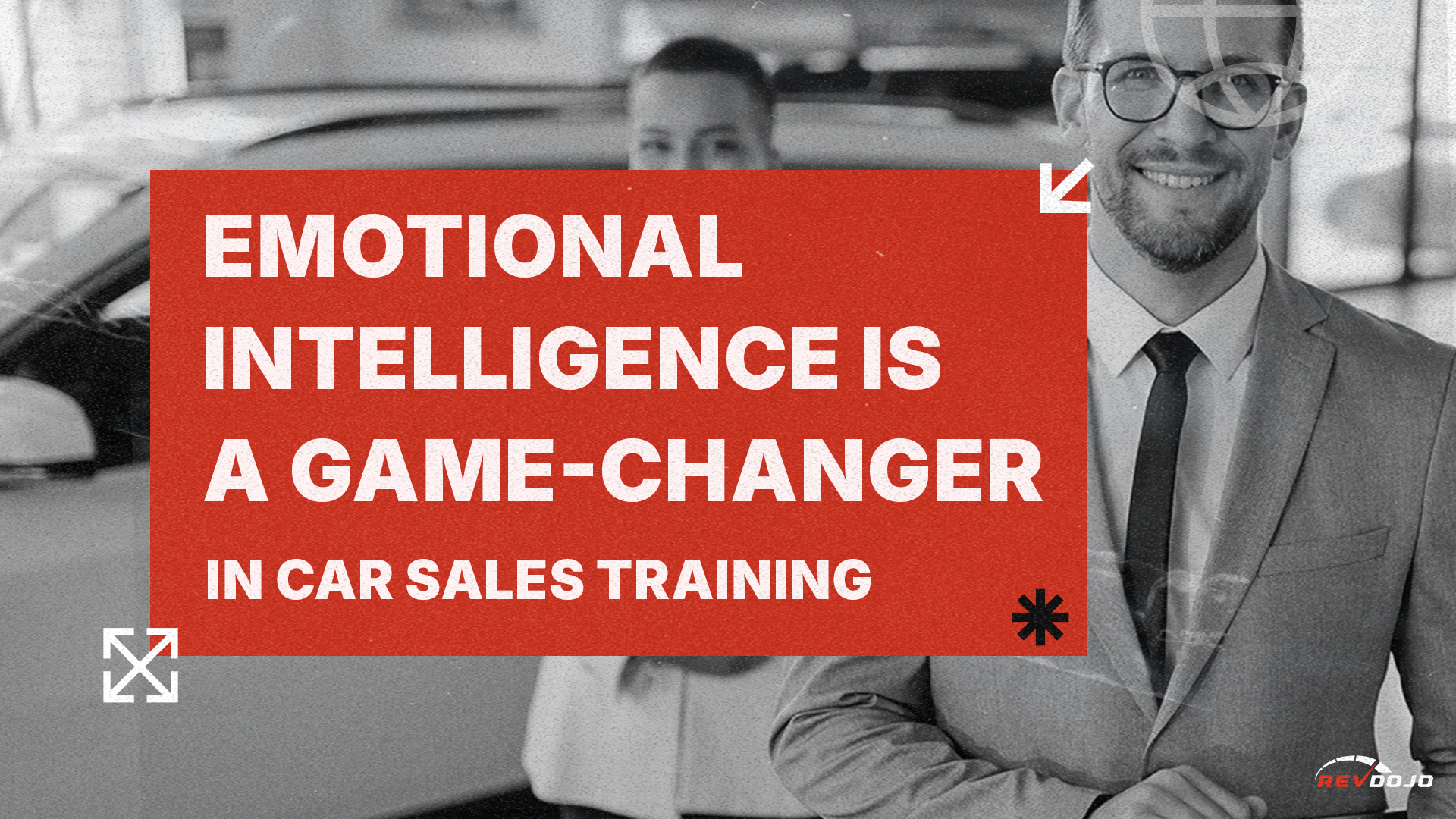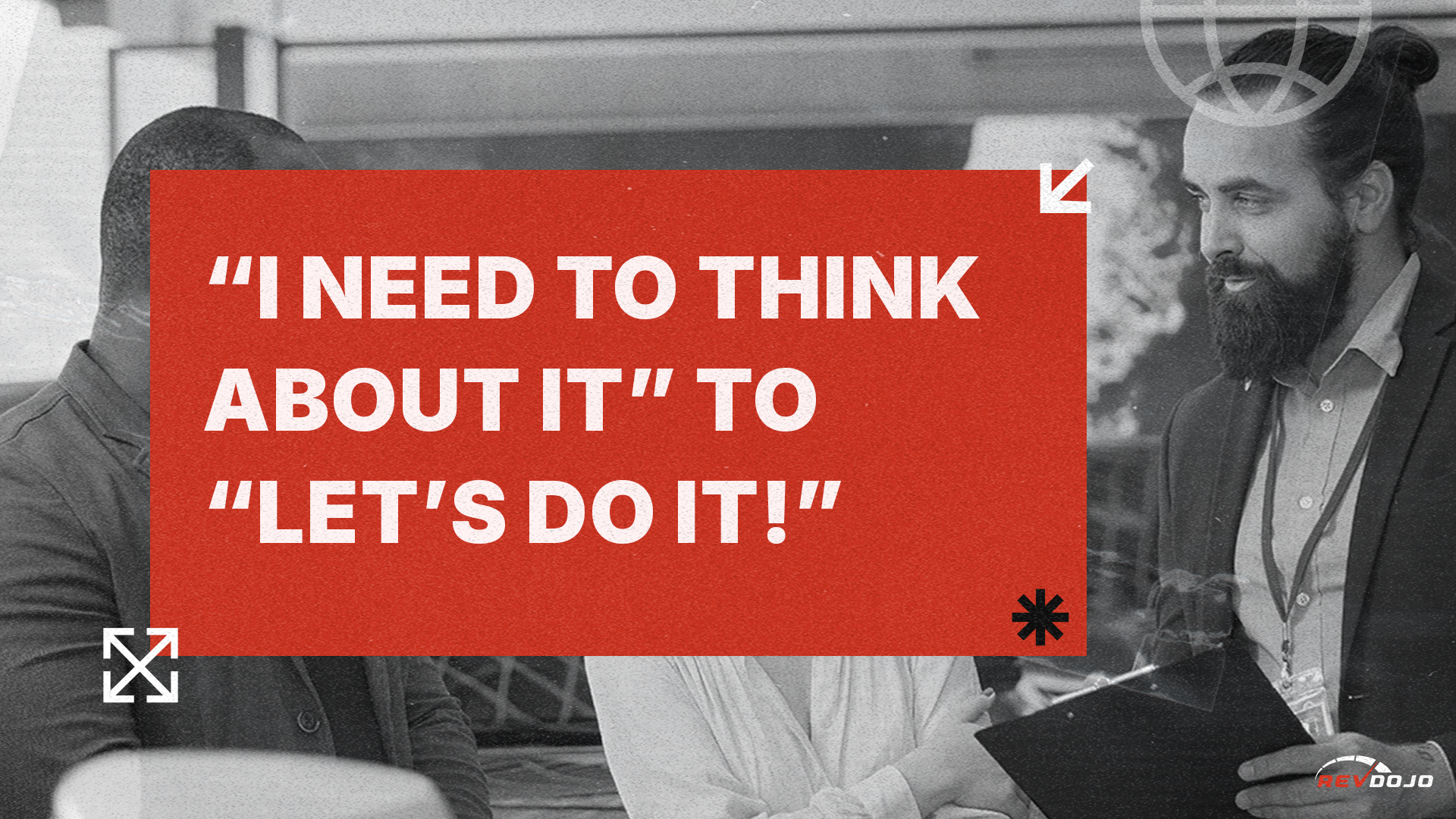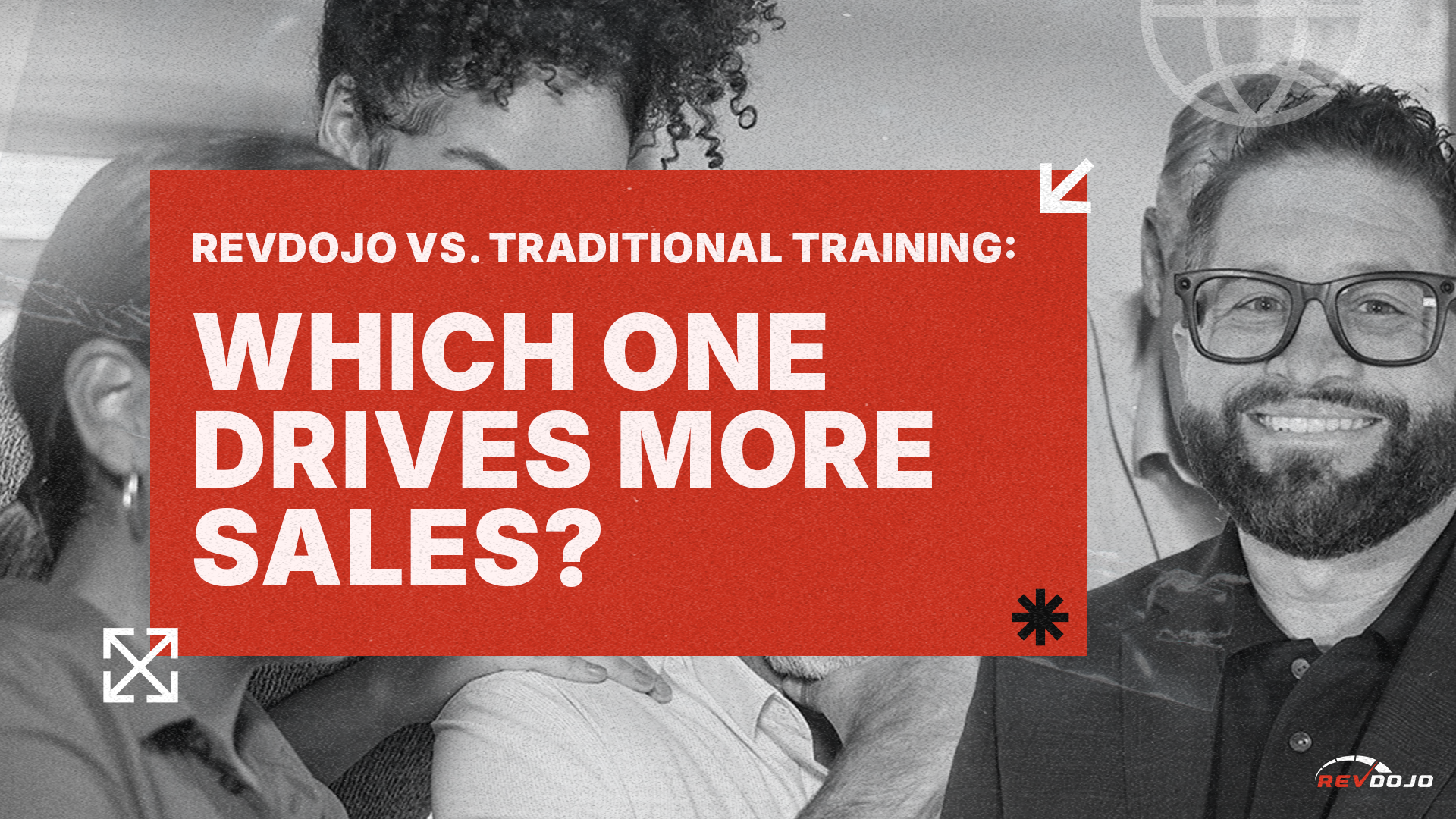Published 22 Jul 2021
How to Sell More Cars on the Showroom Floor – Automotive Sales Best Practices
Blog
Objection Handling
Automotive Sales Training
Sales Process
Car Sales Training
Selling Best Practices
Showroom Floor
The Write Up
The Close
Best Practices
car sales training
Automotive Sales Training
Dealership Training
How to sell more cars
automotive sales best practices
how to sell a lot of cars
showroom floor best practices
Showroom Floor Best Practices
Working a deal on the showroom floor is the final stage before finalizing any car deal. Yet, the mindset of buyers have changed. With recent technology, customers have access to information like never before and oftentimes come to dealerships prepared. The combination of natural distrust most consumers have towards the car buying experience mixed together with an assortment of varying information becomes a barrier for some salespeople.
However, just as these changes can make it harder for automotive professionals to sell, it can also make it much easier. It’s important to remember that customers spend an average of 15 hours researching before hitting the showroom floor. They are committed to purchasing a vehicle, but it’s up to you to convince them that you are the best person and place to buy from. In this blog, learn to become much more effective at bringing buyers through your sales process and closing the deal with easy-to-execute showroom floor best practices!

Handle Showroom Floor Objections – Simple, Fast, and Easy
It’s a fast-paced world, and the pressure buyers build up in their own heads before getting in the showroom door can create a lot of different objections. These timeless classics include:
“I’m not buying anything today.”
“I don’t have a lot of time.”
“I’d need to talk to my wife before buying anything.”
When these types of objections are thrown out early on the deal, it doesn’t actually mean they aren’t committed to buying a car today. Oftentimes, buyers will say that they aren’t buying a car today just because they don’t want to be pressured. In reality, it’s likely that they do want to buy a car. Take control of the deal by letting the buyer know that you can do whatever they are looking for.
Let buyers know that your dealership is the fastest, easiest, and simplest place to buy a car, and that there’s no pressure to purchase anything today. This is almost always enough to push past this objection and move forward with your sales process. You’ll find that if you can get these buyers past the demonstration drive, and inside looking at numbers, they likely will walk away with a new car even though they “aren’t buying today.” Take the pressure away and customers become extremely responsive to the sales process.
A Proper Demonstration Drive
The demonstration drive is where deals become solidified. Since it’s such an important aspect of the sales process, you need to make sure to do it right. Every dealership should have a set demonstration route, and it’s important that you get instructions from your sales manager. A demonstration route should allow for the buyer to experience the car and all of its features in the best way possible. Remember, they have spent hours researching vehicles, but now that they can experience the feel of the wheel, these deals become real! So, have a demo route that is a smooth ride and lets you swap positions in an area that really highlights just how great the vehicle is.
Showroom Floor Negotiations – Hold Higher Gross
Buyers know everything now. Before they even hit the showroom floor, they likely already know the price and payments of the vehicle they’re interested in, as well as a good idea of what their trade-in is worth. So, when they hit you with complaints, it’s most likely just "sport" negotiations. These are likely not real objections; however, customers feel like they have to negotiate.
Negotiating Trade Value
When working with the modern buyer, be prepared to bring a third-party source into the mix. If they have issues with a trade-in valuation, use a third-party website to justify how you got that price. This could be Kelley Bluebook, Edmunds, Black Book, etc. When you do this, it makes you more credible and believable.
However, when third-party figures don’t match your own appraisal, you should be able to explain why in a logical manner. This is why it’s important to take quality mental notes during your walk around of their current vehicle earlier in the deal. Compliment their trade during the walk around and avoid aggressive strategies at this stage. Simply make buyers feel good about their trade during the walk around, and then use the information you gathered to explain why the vehicle has lost some value later in the deal. Most buyers won’t argue with logic, and it allows you to hold higher gross in almost every single car deal!
Negotiating Vehicle Pricing with Inventory
Nowadays, a majority of buyers aren’t coming to your showroom floor to purchase the car of their dreams. They are there because they found a car that they like and is in their price range. As a result, you have a lot opportunity to expand your inventory early on in the deal, which does two very important things – creates more opportunity to sell a car today and allows you to hold higher gross while negotiating on price.
When you’ve expanded the inventory early on in the deal, it’s important to show them vehicles at a lesser price with lesser features. Then, when they have an issue with the pricing of a vehicle in the close, you won’t have to negotiate with price. Instead, negotiate with features and equipment!
Let them know that for the price they are asking, they could potentially save even more money with the lesser vehicle you looked at earlier in the deal. The car without the heated seats, without the GPS, and without all of the other features the buyer liked. This strategy helps to give the buyer perspective of what they're getting for the price. Just like anything else, customers are used to paying more for extra features. So, you’ll be able to close the deal without lowering the price, or they will go ahead and buy the lesser vehicle, which is still a car deal closed!
100% Goals on the Showroom Floor
The goal on the showroom floor should always be 100% of anything you’re doing. Commit to bringing 100% of buyers through the sales process! Everyone should test drive a vehicle and everyone should see numbers. When you take the pressure out of the deal, it makes it easy for buyers to commit to doing these things. They want to purchase a vehicle, and if they don’t feel pressured, it makes it easy for customers to say “Yes” to driving a vehicle and getting written up!
Manager Turn Over (T.O.)
When you’re on the showroom floor, aim to get your manager involved in every deal early on. Getting that involvement from managers makes a world of difference in the quality of any deal. Managers know their stuff, and if you need assistance overcoming a tough buyer later in the deal, or just want to build a V.I.P. experience from the get-go, an early T.O. is always a great to set yourself up for success!
All blog posts

Emotional Intelligence is a Game-Changer in Car Sales Training

From 'I Need to Think About It' to 'Let’s Do It

From Showroom to Sold: The Psychology of Nurturing Car Sales Leads

The Role of Customer Experience in Closing More Automotive Sales

Top-Rated Automotive Internet Sales Training for Dealership Teams

Why Dealerships With Good Car Inventory Win (And How to Make Sure Yours Does)

Driving Sales Success: The Power of Accountability and Consequences in Automotive Sales Training

Top 10 Automotive Sales Tips to Turn Cold Leads into Hot Prospects

From Rookie to Rockstar: How RevDojo Transforms Car Sales Careers

RevDojo vs. Traditional Training: Which One Drives More Sales?
RevDojo is the all-in-one solution for automotive businesses looking to thrive in today's competitive market.
© 2024 Revdojo. All rights reserved.